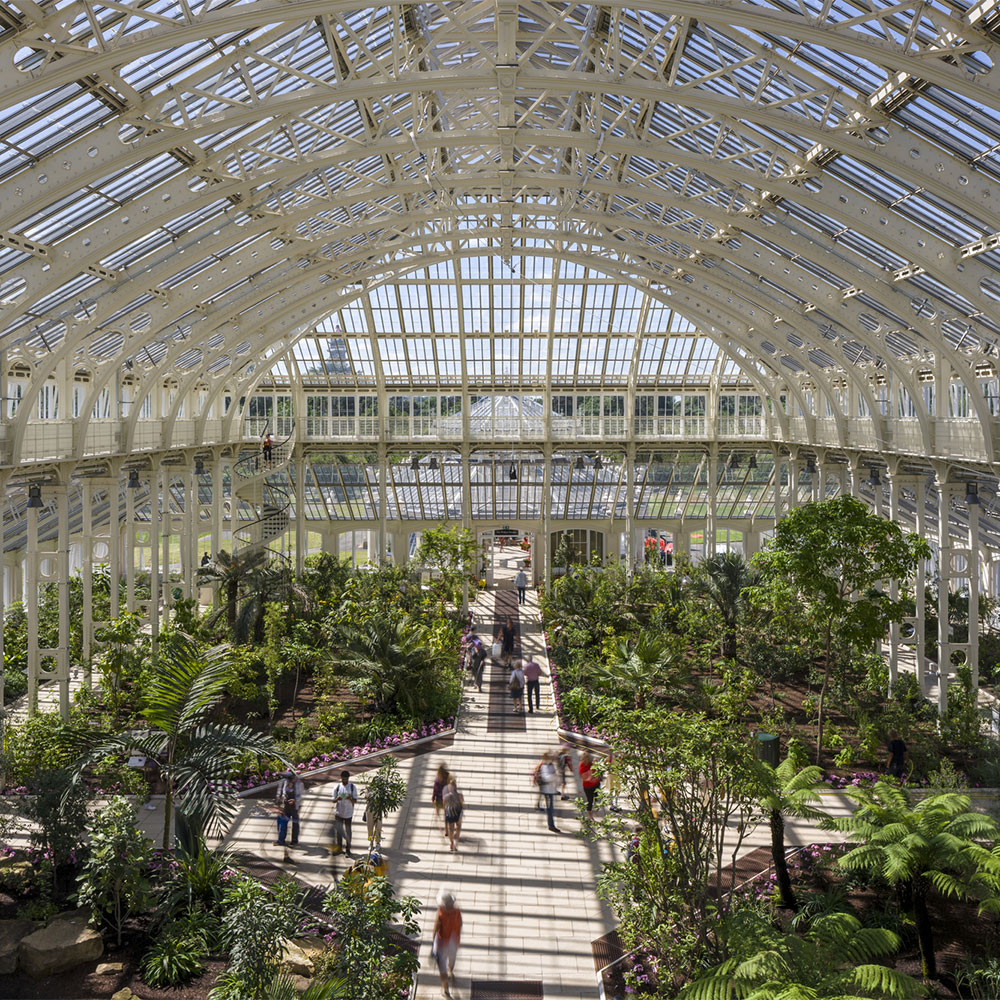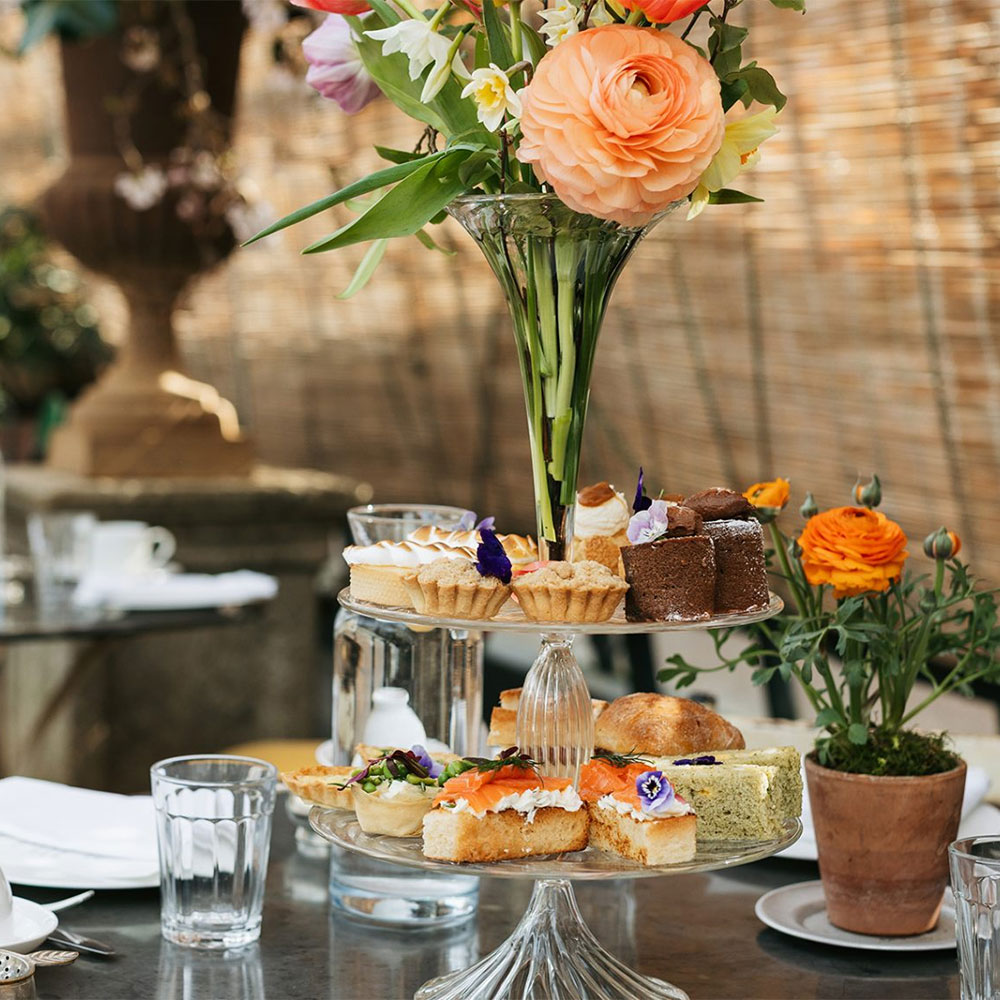Spend the morning wandering about the glorious Kew Gardens & Historic Glasshouses
Grab a coffee and a piece of cake at the Kew Gardens Orangery (your grandfather Smith LOVED this place). You have a bit of a hoofer before you have afternoon tea – so cram some calories in you. MAP
Enjoy a lovely walk along the Thames and through old Richmond – give yourselves approx 90 minutes for this walk.
Stop for tea in the lovely Petersham Nursery Garden BOOK TEA
(If you’d like to enjoy the tea, this walk can only be done Thursday – Sunday. Tea needs to be booked in advance.)
Walk to Ham House and enjoy!
Getting to Kew Gardens:
Take the Tube, District line (Green) to Kew Gardens Tube station
Walk 0.3miles to Kew Gardens MAP
Royal Botanical Gardens Kew
MAP | KEW, RICHMOND
The landscape design of Kew Botanic Gardens, their buildings and plant collections combine to form a unique testimony to developments in garden art and botanical science that were subsequently diffused around the world. The 18th century English landscape garden concept was adopted in Europe and Kew’s influence in horticulture, plant classification and economic botany spread internationally from the time of Joseph Banks’ directorship in the 1770s. As the focus of a growing level of botanic activity, the mid 19th century garden, which overlays earlier royal landscape gardens is centerd on two large iron framed glasshouses – the Palm House and the Temperate House that became models for conservatories around the world. Elements of the 18th and 19th century layers including the Orangery, Queen Charlotte’s Cottage; the folly temples; Rhododendron Dell, boundary ha-ha; garden vistas to William Chambers’ pagoda and Syon Park House; iron framed glasshouses; ornamental lakes and ponds; herbarium and plant collections convey the history of the Gardens’ development from royal retreat and pleasure garden to national botanical and horticultural garden before becoming a modern institution of conservation ecology in the 20th century.

Wrap up your morning at Kew with the Great Pagoda (opposite end of the garden from where you entered) and when done, exit the Gardens there onto Kew Road and take a right.
Stage 1
Walk along Kew Road for .80 mile.
Turn right onto Old Station Passage
At the end of the passage, turn left and walk over the bridge, passing Richmond Theatre on your left and a small green, Little Green, on your right.
Stage 2
Shortly after, you will reach a crossroad where Duke Street meets The Green. Walk diagonally across the road to the corner of a larger green, Richmond Green, where there are two paths leading diagonally across it. Take the path on the left. Once across the green, walk down the road directly in front of you, Friars Lane, and follow it down towards the river.
Stage 3
When you reach the river, turn left, walk along the river path and under Richmond Bridge. Carry on along the path, passing a small, grassed area and Richmond Canoe Club, both on the left. Shortly after, the path will bear left up a short slope and then right to Buccleuch Gardens, a grassed area between the river and path. On the left-hand side, in the garden, there is a grotto area and a tunnel leading under the road and up into Terrace Gardens. Go through this tunnel and up either set of steps.
Stage 4
Once through the tunnel, turn left and then right up the hill past the greenhouse and the Hollyhock Café towards the steps. Go up these steps, turn left and walk up the sloping path. Shortly after, turn right and follow the path up and round to the left to a water feature which will be on your right-hand side. Once at the water feature, go up the steps in the back right-hand corner and then follow the path up to another set of steps. Once up the steps, turn right and walk towards a green hut, the Nightwatchman’s Hut, towards more steps. Go up these steps to a gravel area. This is the viewing point at Richmond Hill. Take time to stop and enjoy the view down towards the River Thames and across to Ham House and Garden.
View from Richmond Hill
The view from Richmond Hill, down towards the River Thames, is the only view in England to be protected by an Act of Parliament. This view has featured in many paintings by artists including JMW Turner
Stage 5
Once you have taken in the view, walk straight down the steep path towards the main road, Petersham Road, and cross the road using the pelican crossing.
Stage 6
Once across the road, turn left and then immediately right. On the left hand side, theres a kissing gate, go through this and follow the path through Petersham Meadows. At the end of the meadows, you will reach another kissing gate, go through this and carry on along the path with the hedges on either side to a gravel lane.
Stage 7
Once you hit the gravel road – look for
Petersham Nurseries Teahouse
Petersham Nurseries Teahouse
MAP | RICHMOND
Brimming with delicacies that reflect our spirited style, and exuding romance and character, inspired by the natural world, this is an Afternoon Tea that departs from the traditional, engaging with new ideas to present an entirely different experience.
Our Garden Afternoon Tea provides the perfect opportunity for sharing special moments and creating lasting memories. Children can now dine with parents on their own curated menu, showcasing an assortment of treats reflecting our classic Afternoon Tea.
Stage 8
When you are done with tea, continue on the gravel path to River lane – which leads down to the river. Once you are at the river, turn left. Walk about 10 minutes on the Thames Path, which will lead you to the river-facing entrance of Ham House.
Ham House, 1610
MAP | RICHMOND
This rare and atmospheric 17th-century house sits on the banks of the River Thames in Richmond. Ham House is internationally recognized for its superb collection of paintings, furniture and textiles, largely brought together 400 years ago. Outside, the open and formal restored 17th-century gardens surround the house. It includes a productive kitchen garden containing many heritage crops, the maze-like ‘Wilderness’, complete with summerhouses, and many beautiful spots perfect for a picnic.
That the estate still exists is due the shrewd and clever Dysart women, Catherine Murray, Countess of Dysart and her daughter Elizabeth. The English Civil War saw the house and much of the estate sequestrated, but Catherine regained them on payment of a fine. During the Protectorate, Elizabeth Murray successfully navigated the prevailing anti-royalist sentiment and retained control of the estate.








